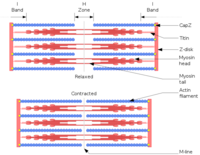Isotropic bands

Okay, so imagine you have a big piece of candy that you want to share with your friends. You can cut the candy into equal-sized pieces and give one to each of your friends. This way, everyone gets an equal amount of candy.
Now, think of the candy as a material that scientists study called a crystal. The crystal is made up of tiny parts called atoms that are arranged in a repeating pattern. Sometimes, the atoms are arranged in a way that is the same in all directions, and this is what we call isotropic.
The scientists are interested in studying the properties of the crystal, like how it responds to pressure or temperature changes. To do this, they shine a light on the crystal and look at how it scatters the light. They might notice that the crystal scatters the light differently in different directions. But if the crystal is isotropic, it scatters the light the same way in all directions.
So, now we come to isotropic bands. Sometimes, scientists study crystals that are made up of layers of different materials. These layers might have different properties, like one might be magnetic while the other is not. But if the layers are arranged in an isotropic way, they can still scatter light the same way in all directions.
Therefore, when scientists see that the layers scatter light in the same way, they call this an isotropic band. It's like the candy pieces that were cut to be equal, but in this case, the layers in the crystal are arranged equally in all directions.
Now, think of the candy as a material that scientists study called a crystal. The crystal is made up of tiny parts called atoms that are arranged in a repeating pattern. Sometimes, the atoms are arranged in a way that is the same in all directions, and this is what we call isotropic.
The scientists are interested in studying the properties of the crystal, like how it responds to pressure or temperature changes. To do this, they shine a light on the crystal and look at how it scatters the light. They might notice that the crystal scatters the light differently in different directions. But if the crystal is isotropic, it scatters the light the same way in all directions.
So, now we come to isotropic bands. Sometimes, scientists study crystals that are made up of layers of different materials. These layers might have different properties, like one might be magnetic while the other is not. But if the layers are arranged in an isotropic way, they can still scatter light the same way in all directions.
Therefore, when scientists see that the layers scatter light in the same way, they call this an isotropic band. It's like the candy pieces that were cut to be equal, but in this case, the layers in the crystal are arranged equally in all directions.
